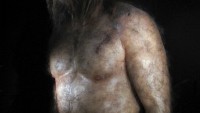Human-Neanderthal Interbreeding UPDATE: DNA Analysis Supports European Discovery
| KJ Belonio | | Jun 25, 2015 06:30 PM EDT |
(Photo : Getty Images/Cristina Arias) Based on the DNA analysis results, it revealed that the ancient man found thirteen years ago has supplied new human-Neanderthal interbreeding proof.
Human-Neanderthal Interbreeding Update - In a recent study published in the journal Nature, an international team of researchers suggests that modern humans and Neanderthals interbred in Europe. Now, more pieces of evidence are found that modern-day Europeans have Neanderthal DNA in their genome.
Like Us on Facebook
Based on the DNA analysis results, it revealed that the ancient man found thirteen years ago has supplied new human-Neanderthal interbreeding proof. As previously reported, the ancient man was more closely related to Neanderthals (Homo neanderthalensis) after the sequenced genome was between 6 percent and 9 percent Neanderthal, New Historian noted.
The DNA analysis also suggests that it has measured the highest proportion of Neanderthal DNA in a modern human than any other Homo sapiens previously analyzed. To compare, modern-day Europeans have between 2 percent and 4 percent Neanderthal DNA in their genome.
An international team of scientists have comprehensively analyzed a 40,000-year-old DNA sample extracted and sequenced the genetic material from a jawbone found in 2002 inside the cave system of Pestera cu Oase in southwest Romania, BBC News has learned. According to the earlier findings, it was established that the human-Neanderthal interbreeding occurred some 55,000 years ago.
It was believed that the interbreeding have happened in the Middle East before the species spread into Europe. However, further studies indicate the human-Neanderthal interbreeding have occurred in Europe as well. As per Empire State Tribune, added results show interbreeding transpired far more recently that scientists have previously thought.
"This is interesting because it means that Europe has not been continuously occupied by the same lineages ever since the first waves of migration of modern humans into Europe," Harvard Medical School geneticist David Reich said.
Additionally, scientists said a Neanderthal was among the individual's ancestors as recently as perhaps 100 to 150 years, The Express Tribune reported. While Reich added that genetic analysis showed the individual entered Europe but did not give rise to later populations.
The latest result on the human-Neanderthal interbreeding study is far more interesting because it reveals the fact that Europe has not been continuously occupied by the same lineages ever since the first waves of migration of modern humans into Europe.
Thanks to modern technology, the initial suggestion has now been confirmed that there had been an occurrence of human-Neanderthal interbreeding in Europe. In light of other recent studies, Neanderthals were far from the primitive cavemen we used to think they were. It also revealed a greater than traditionally believed complexity of human evolution.
TagsHuman-Neanderthal Interbreeding, Neanderthal, DNA Analysis, discovery, Science
©2015 Chinatopix All rights reserved. Do not reproduce without permission
EDITOR'S PICKS
-

Did the Trump administration just announce plans for a trade war with ‘hostile’ China and Russia?
-

US Senate passes Taiwan travel bill slammed by China
-

As Yan Sihong’s family grieves, here are other Chinese students who went missing abroad. Some have never been found
-

Beijing blasts Western critics who ‘smear China’ with the term sharp power
-

China Envoy Seeks to Defuse Tensions With U.S. as a Trade War Brews
-

Singapore's Deputy PM Provides Bitcoin Vote of Confidence Amid China's Blanket Bans
-

China warns investors over risks in overseas virtual currency trading
-

Chinese government most trustworthy: survey
-

Kashima Antlers On Course For Back-To-Back Titles
MOST POPULAR
LATEST NEWS
Zhou Yongkang: China's Former Security Chief Sentenced to Life in Prison

China's former Chief of the Ministry of Public Security, Zhou Yongkang, has been given a life sentence after he was found guilty of abusing his office, bribery and deliberately ... Full Article
TRENDING STORY

China Pork Prices Expected to Stabilize As The Supplies Recover

Elephone P9000 Smartphone is now on Sale on Amazon India

There's a Big Chance Cliffhangers Won't Still Be Resolved When Grey's Anatomy Season 13 Returns

Supreme Court Ruled on Samsung vs Apple Dispute for Patent Infringement

Microsoft Surface Pro 5 Rumors and Release Date: What is the Latest?











